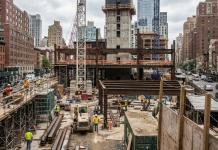Why Infrastructure ETFs Are Crushing Homebuilder Funds
Two construction ETFs. Same industry. Completely different results.
I’ve been analyzing the performance gap between major construction ETFs. The results show where money actually flows in construction.
The iShares U.S. Home Construction ETF (ITB) returned 18.1% over the past year. The SPDR S&P Homebuilders ETF (XHB) delivered 21.5%. Same sector, different strategies, measurable difference in outcomes.
But performance tells only part of the story.
The real shock is in the money movement. ITB lost $1.2 billion in outflows while XHB shed $400 million. Investors are fleeing, but not equally.
Here’s why.
The Housing Reality
Homebuilder-focused investments face sustained pressure from elevated mortgage rates. When borrowing costs sit in the mid-to-high 6% range, buyers stay on the sidelines. Demand drops. Builder performance follows.
XHB shows why diversification works. Homebuilders make up just 28% of its portfolio. Lowe’s is the largest holding at 4.7%, nearly matching D.R. Horton.
This broader exposure creates stability when pure homebuilding struggles. It’s the difference between betting on one piece of construction versus the entire supply chain.
Infrastructure Tells Different Story
While residential construction struggles, government spending supports infrastructure projects.
The contrast is stark. While housing stumbles, federal construction projects jumped 3.2% in July. State and local spending held steady at 0.1% growth. Combined public construction grew 0.3%.
The scale is massive. Approximately $1.8 trillion in federal grants, loans, and incentives flows into infrastructure development in 2024.
Government spending creates steady demand for materials, engineering services, and industrial products. Companies in these markets grow from policy decisions, not interest rates.
What This Means for You
This split creates real opportunities for construction professionals investing in their own industry.
Infrastructure funds deliver steadier returns when rates are high. Government contracts provide predictability that housing markets can’t match.
This gap will likely continue while borrowing costs stay elevated. Federal programs run on multi-year schedules, creating opportunities that don’t depend on housing cycles.
For construction professionals, the choice is clear. Infrastructure exposure beats pure homebuilding strategies in this environment.
The smart money is already moving. The question is whether you’ll follow.








